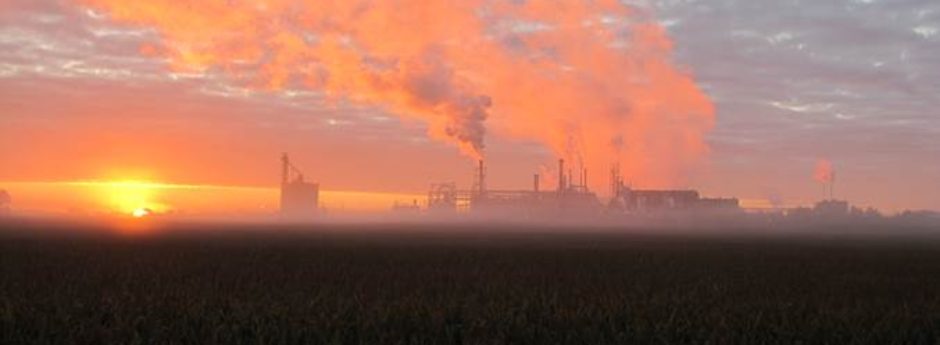I spent July 4 on the road this year. I had some business to attend to out of state (Wyoming) on the 5th so I decided to take off early and spend a few days covering a few hundred miles at a leisurely pace and take the time to see some of small town America.
I packed my tent, cot, sleeping bag and of course my laptop and Kindle. That’s my notion of “glamping” (“glamour camping”), almost any campground is going to be about a fourth or a fifth the price of the cheapest motel.
As I drove down Interstate 64 I’d see small towns with populations measured in the low hundreds, some only barely within eyeshot of the highway. When the mood struck me (often) I’d pull off and drive through the town, note the houses and businesses and wonder why people lived here and what they did for a living.
In this part of the country many small towns are all about serving the needs of the surrounding farms whose business keeps small grocery stores, equipment dealerships and fix-it places alive.
I stopped in Medora, North Dakota, to check out the summer residence/hunting lodge built by the Marquis de Mores to run a failed cattle business from. (Hint: Monsieur Marquis, if you’re going to run a cattle business out west you need to be here more than three months a year and dispense with the lavish lifestyle while the business is starting up.)
A little further east I diverted down “The Enchanted Highway,” 32 miles of two-lane blacktop festooned with eight of the world’s largest scrap metal sculptures. It’s a work in progress developed by local artist Garry Greff starting in 1989.
The so-called highway ends in a town with a population of less than 200.
Some of the towns were quite forgettable. Some were quite charming. At least one looked like a piece of hell. There’s something about a very wide main street in the hot glaring sunlight gives that impression.
As I toured I reflected on what makes a small town livable. What makes it a place people want to come back to and raise their children after they’ve sampled the bright lights and big city?
Some reasons are intangible. Motivated people who get together with other people to organize and run things: a community center, a baseball team, a park committee, a local museum or library.
A town needs these kind of people, and they need projects to occupy their time or they tend to become awful busybodies.
In this day and age, some reasons are technological. Cable/satellite TV, video rentals and lately streaming video give people access to movies and entertainment that used to be available only in larger population centers.
On the one hand this keeps people in small towns from feeling out of touch with popular culture. On the other hand it tends to be solitary entertainment, not a community activity.
But there’s something I’ve noticed about towns I drive through that makes me think, “I could live here.” They have trees, a center and old buildings.
Tree-lined streets give shade in the hot summers and mute the effect of harsh sunlight on houses that highlights the imperfections and age-spots. Moreover old trees show that people have lived here a while, and all that while they’ve taken care of those trees.
A center is usually pointed out with signs that say, “Business district.” Even better is when they say, “Historic business district.” That usually means the businesses will be housed in brick buildings that are connected down the length of each block. Here is where the cafes where people gather for coffee and conversation are.
Nothing says “built to last” like brick. Even if the building has to be gutted, with minimal care the shell will last centuries. And there’s something about being able to stroll down a row of businesses without having to pass an alley entrance.
Outside of the business district, old houses. In the decades bracketing 1900 people came to the rural west and built beautiful Victorian homes with turrets, porches and fancy woodwork trim.
Sometimes you find houses like that preserved by the local historical societies. It’s better still if they have owners who live in and care for them.
In the larger small towns with small colleges the last stage of a big house’s life is when the owner turns it into student apartments. After which you might as well burn it down. I just moved from a town that lost three of its oldest, most elegant houses that way. Touring the ruin while workmen salvaged what they could of the antique fixtures
I could see they used to be beautiful. And I wonder, can’t we build like that anymore?
